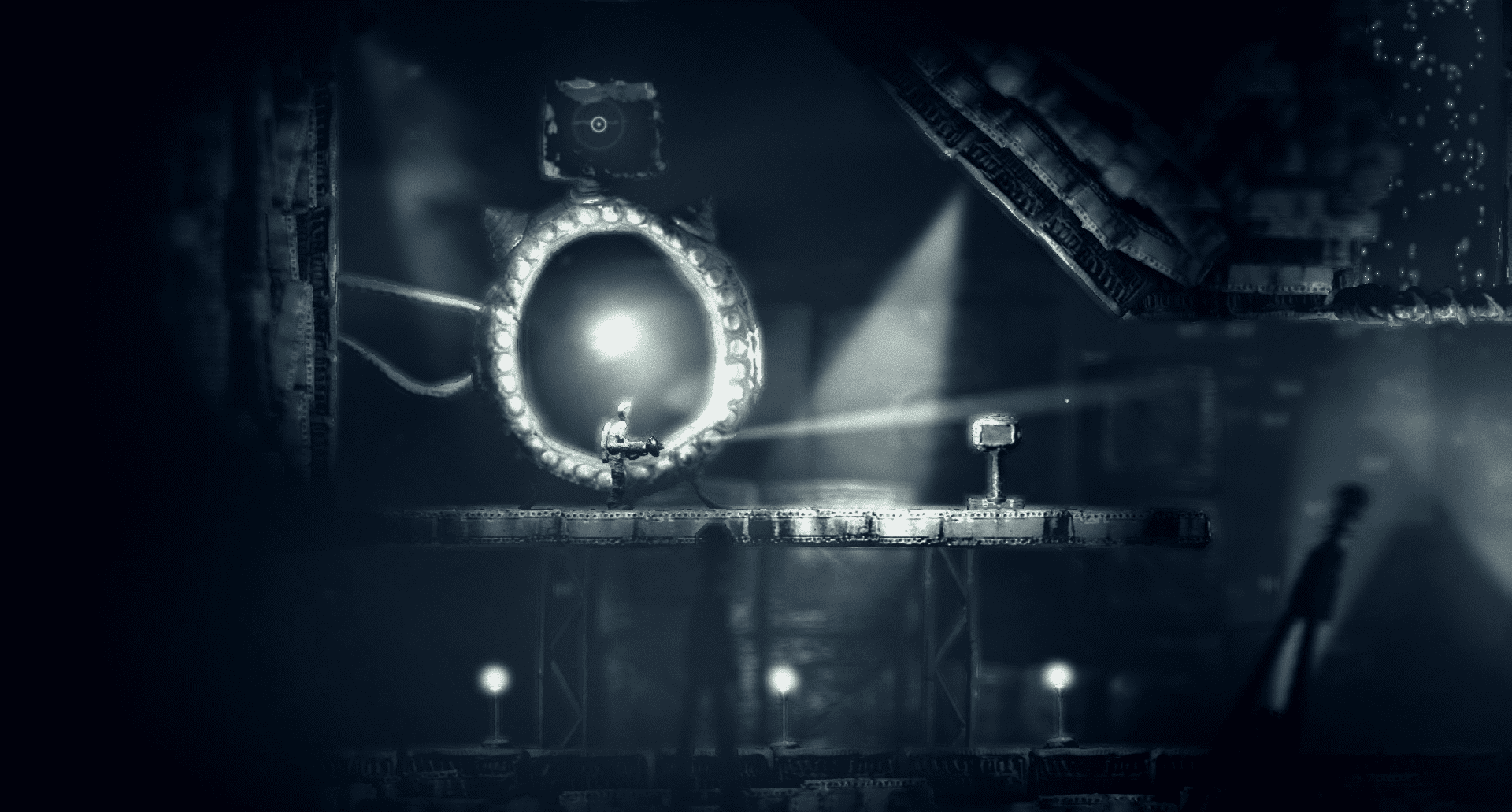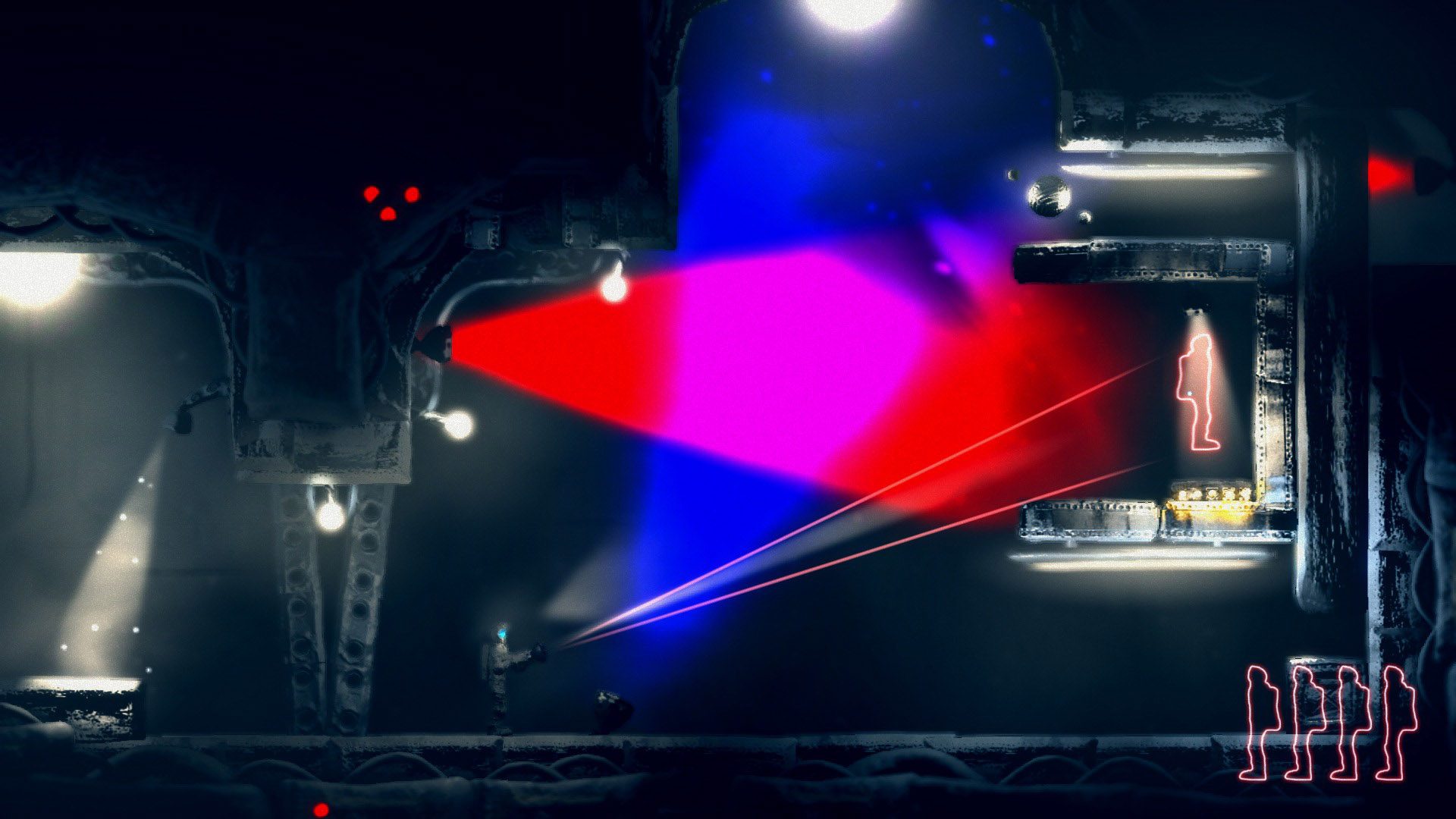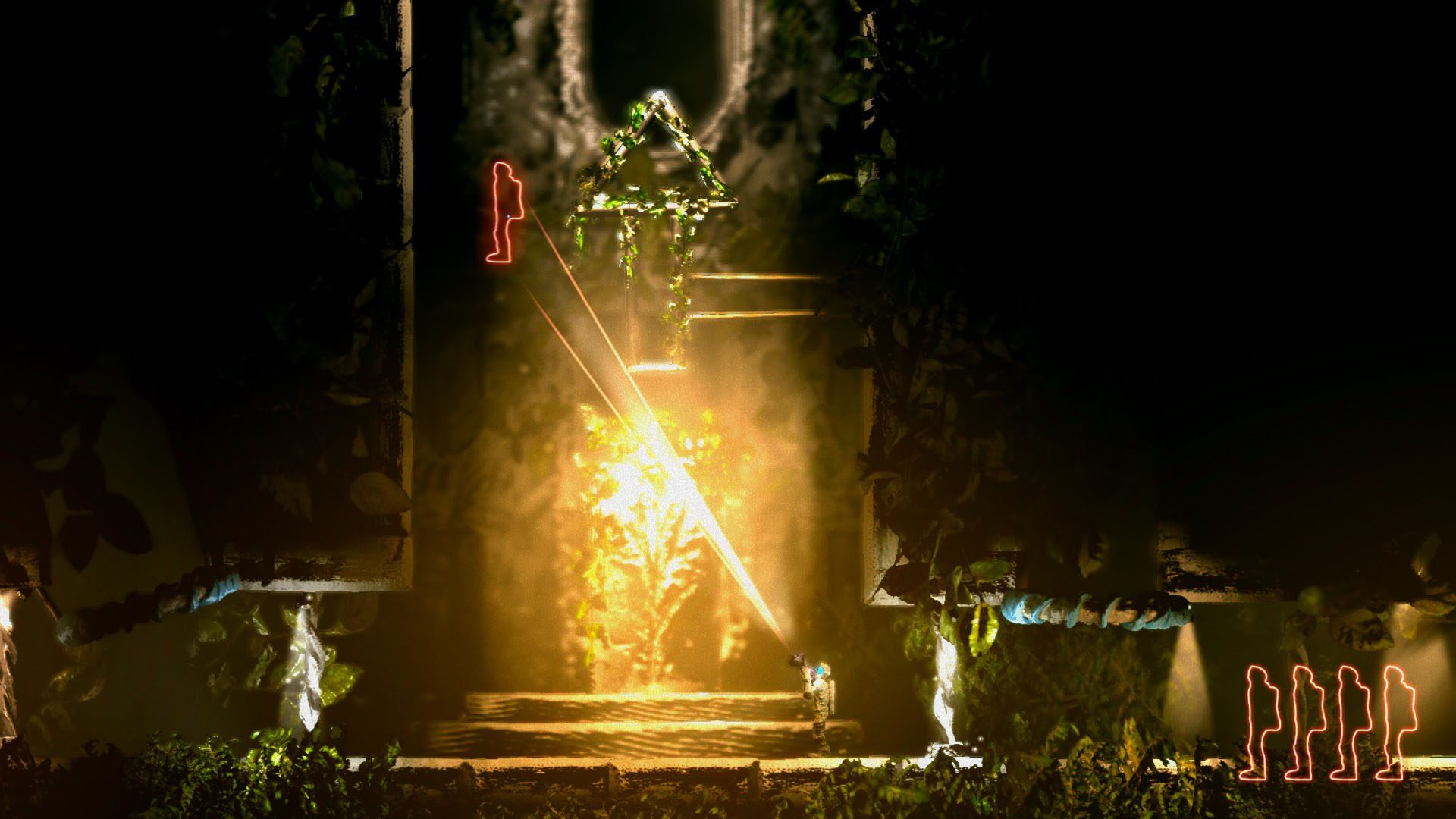A lone astronaut wanders around a desolate and dark environment. Eventually, he makes his way to a space station which is equally dark and devoid of life. Your first instinct is to try to figure out what happened to this station and its inhabitants, but in order to do that you will need to be able to traverse the increasingly complex rooms and gather a heap of security orbs that will open the doors you need to pass through to progress. Some of the tricks and traps laid out seem impossible to beat without a team of men, which you don’t have. What you do have is a nifty little doodad that lets you create clones of yourself to assist in your self-assigned quest.
The Swapper gets its name from the aforementioned gizmo that lets you create clones of yourself which mirror your every move.While the game is never explicit in telling you what your actual goal is, it is clear that you must go froward. Almost every room of the space station will require pressure plates to be pressed either to open a door or turn off colored lights that inhibit the swapper’s functions. You can place a clone just about anywhere where you have a direct line of sight, and eventually you will learn how to transfer the main character’s consciousness to a clone so you can assume direct control of it and snag the security orbs needed to unlock doors to new areas of the station.
This gameplay mechanic is so truly unique that when you first enter a room it can be hard to wrap your brain around just what to do. After the game teaches you the basics of jumping, looking around, making clones and swapping to them there is very little hand holding or tutorial given. That’s why, for me, learning that time nearly grinds to a halt while you are deciding where to manifest a clone was a huge “ah-ha” moment. For example, if you need to travel straight up a chute you can spawn a clone over your head and swap to it quickly, then immediately launch the swapper to produce another clone and swap to it and so on. At first this novel approach to traveling through large horizontal or vertical gaps seems novel, but after a few times of seeing the body your “soul” just inhabited crumple to the ground in a dead heap it will become a thought provoking experience for a lot of players.
Unfortunately, the story in The Swapper is never fully fleshed out. You are fed bits and pieces via the logs of long gone crew members as well as creepy talking rocks that are strategically placed throughout the station. It’s hinted that the people that were on the station were aware of the swapper and hesitant to use it, presumably because they were afraid of what would happen to their consciousness if it was forcefully plopped into a fresh duplicate of their body. It would have been great to see the developers get more into the metaphysical and philosophical side of the story line they created, and it seems like they dipped their toes in that particular narrative pool without ever fully committing to jump into it.
While you’re working through each puzzling room and having deep, introspective conversations with yourself you will probably notice that the environment in the game is incredibly creepy. The music is ambient and never really looses the haunting tone it starts out with. When one of your former bodies is crushed to death it will make an unsettling sound. Visually, the game his pretty spooky too. It is very dark, almost to the point of being too dark to see at times. This is a bit of a bummer, because the entire game was handmade using claymation and everyday materials. This isn’t a brand new idea, but it’s one that is executed fairly well here. It could be said that the dark palette and lighting take away from some of the detail, but it seems it is a necessary trade off for a game in this setting. The camera work also leaves a little to be desired; it is zoomed so far out that I feel like some of the finer visual nuances of the game could be missed.
I am not a religious man by any means, yet despite that a quirky little puzzle/platformer game gave me feelings outside of the one or two I typically register (usually “hungry” and “tired” are about as diverse as my emotional spectrum gets). Using clones to solve environmental puzzles is definitely something we haven’t seen on this scale before, and the game is just the right length to prevent the concept from becoming stale. The lighting and the camera work are a bit problematic, but the painstakingly hand-crafted environment more than makes up for that. As I scratched my noggin trying to unravel its clever puzzles and enjoyed the melancholy atmosphere I found myself thinking about just what makes a human so human. If that special spark that just barely sets us apart from the apes were moved or transferred somewhere else, would it be diminished?




